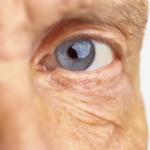Losing Weight without Starvation
When people talk about losing weight, the 1st thing out of their mouths is usually, “I have to go on a diet”. Of course you do….but….that’s not the only thing….and…..you don’t have to diet to the extreme you think. Dieting is only part of the “losing weight” equation. It is so important to look at 2 other key factors to effectively lose weight, get in shape and make it last. Isn’t that the ultimate goal….to lose weight in a way that will make it last and give you more control over your own body?
Ask yourself why you want to lose weight. Is it to look better?…feel better?….get healthier? Those are all very valid reasons. Scientifically, if you burn 3,500 more calories than you eat, you will lose 1 pound of weight. That is a matter of fact. It’s not calorie deprivation, it’s an equation of calorie consumption and expenditure.
If you’re new to weight control, remember this: If you do anything to the extreme, the odds are that it won’t last. You’ll probably not be able to keep it up for long. You’ll set yourself up for failure. Make your goal (an improvement over your current state) sensible, realistic and achievable. Studies indicate that if you take off weight quickly, or as a result of a radical change, the odds are that you’ll put the weight back on in the future. You’re setting yourself up for the “yo-yo” syndrome.
Before getting involved in any fitness routine or weight loss program, you should consult your physician and have a fitness professional set you up a routine. Again, keep your goal sensible and simple. It’s best to factor in small, incremental goals to get to your ultimate goal. So…are you asking yourself about the 2 other factors?
To get to their perfect body, fitness gurus focus on 3 main areas : diet, aerobic conditioning and strength training. I’ve already briefly mentioned the “diet” part. For the individual looking to lose those extra pounds (without failing) and get in better shape, I propose you focus your efforts on: eating better, burning calories and getting stronger. These 3 areas fit together, and more importantly, complement each other to make reaching your goal easier and long-lasting. They feed off each other. Let’s look at each area.
Nutrition really is the foundation of life. You may have heard the sayings: “You are what you eat!”, “Eat for life!”, “Back to nature”, “Eat for the health of it”. Well, those sayings are pretty much true. There are 2 main concepts to remember. First, it’s best to eat whole foods low in fat. Second, eat like a King in the Morning, a Prince in the Afternoon and a Pauper at Night. From these 2 concepts, a whole bunch of details come out.
As a general rule, foods that are more whole, organic and less processed are better for you. These foods are more complex in their chemical structure and, as a result, take longer for your body to process. Thus, you will burn more calories in the digestion process. Another benefit is that these foods have high nutritional values. A good example is wheat bread versus white bread. The white bread may have additives, which make it nutritionally okay, but your body processes it a lot quicker because the natural fiber (the wheat kernel hull) is no longer there.
Do you find yourself eating late-night snacks? If you’re concerned about controlling your weight, eating late at night before bed is a no no. Your body’s metabolism slows down while sleeping, which is not when you want to feed it a lot of calories. That basically is the concept of eating like a King, Prince and Pauper. It’s best to eat your “fun” foods earlier in the day so you have more time to burn them off. It would be even better if you ate your “fun” foods during the day about 2 hours before you exercise. For those of you that exercise first thing in the morning (like me), that’s almost impossible. That’s okay, though, because you can have your “fun” foods after your workout to restore your energy reserves in preparation for your next workout.
The thing you don’t want to do is starve yourself. Your body has a built in mechanism that senses a “lowered” food quantity and it kicks in a conservation mechanism. Your metabolism slows down and food storage (for survival) becomes most important. If you let your body fall into this trap, you will probably lose weight initially. However, you will get to a sticking point fast and won’t be able to lose any more. In fact, you’ll more than likely lose muscle and gain fat…..which is exactly “not” what you want to do.
A major concept to remember is to simply spread out your total daily quantity of food into 5 or 6 smaller meals. In theory, if you eat the same amount, just in smaller, more frequent intervals, you’ll lose weight. The reason is that your body senses the continued small feedings, gets out of the starvation mode, and revs up its metabolism. Thus, you’ll burn more calories. Keeping your exercise level as it was before the multi-meal plan, you’ll lose weight because you’ll be burning more calories than before.
The most successful approach is to make small changes in your current diet. Before you make any changes, take 3 days and write down what you eat and when you eat. This is a great discovery exercise. Now, plug in a couple of nutritional improvements. Not too radical, though, because extreme shifts are against human nature. Wait a couple of weeks to get comfortable with your positive change, then plug in something else. The key to nutrition is making positive changes that you can live with. You can still eat your “favorite” foods. Just don’t eat them late at night and cut down on the amount.
Remember, 3,500 calories equal 1 pound of weight.
So, how do you burn calories? Simply put, you do things. The key is to exercise more than what you’ve been exercising or eating less than what you’ve been eating. The best combination is both. Doing chores around the house, taking the stairs instead of the elevator and playing with your kids are all kinds of “hidden” ways to burn calories.
At some point, though, you’ll probably have to do some kind of aerobic activity. Walking, jogging, stationary biking and swimming are major ways to burn calories. A great goal would be to do one of these activities 3 times per week for a 30-minute duration. Slowly increase your intensity or try increasing the time to 45 minutes.
A great way to minimize injuries and make it more interesting is to cross train: walk on Monday, do kickboard pool laps on Wednesday and ride a stationary bike on Friday. Cross training minimizes stress on your joints and provides a better “overall” muscle conditioning effect. Think about it, can’t you read a book or watch TV while you’re stationary biking for 30 to 45 minutes. You’ll be amazed at how quick the time flies, and you’ll be burning calories the whole time. Or, you can listen to your favorite CD or talk to a friend while walking for 30 to 45 minutes. These are win win situations that will benefit your health and body.
When losing weight, the most important thing you want to do is lose the “fat” and “not” the muscle. Therefore, part 3 of the realistic approach is to stimulate your muscles on a routine basis. The more lean body tissue (your body’s ratio of fat to muscle) you have on your body, the more calories you will burn in everything you do. Again, you don’t have to belong to a gym or buy 100 pounds of weights to get this benefit. Though, if you keep progressing, you’ll catch the fitness bug and want to buy weights or join a gym.
As a beginner at home, you can do a number of things without weights that will reap benefits and propel you in the right direction. Working your “core” area (stomach, lower back and hips) is a must and provides stabilization strength for your everyday living requirements. Leg lifts and modified crunch movements are great for your stomach area. Doing the “Good Morning” exercise, which is done by standing upright with knees slightly bent and bending at the waist until your torso is almost parallel to the ground, will strengthen your lower back. Doing squat movements with you back against a wall for support are great for your hips and upper legs. Let’s take it one step further.
You can use almost any weighted object (soup cans, water jugs, etc) to perform squats, chest presses, should presses, bentover rows, bicep curls and tricep extensions to work all the muscles in your body. If you start getting bored with the “found-at-home” equipment, you can get yourself some dumbbells and a bench. After a while, you may even consider joining your neighborhood gym. You see, it’s all in making small progressive steps. The key is to consistently stimulate your muscles.
Okay, so optimally I’m talking about doing something 6 days of the week, alternating daily between some kind of strength training and calorie burning effort. Can you carve out 30 to 45 minutes per day of “your” time for improvement? In addition to getting in shape, you’ll be amazed at what exercise will do for you outlook on life.
Key Points to Success:
* Establish a goal
- Make it sensible and realistic
* Be consistent
- Make small changes/improvements in the big 3 areas
- If you fall off the horse (your schedule), get back on track
* Reward and Re-Evaluate
- Do something good for yourself every now and then
- Re-check your big 3 and make adjustments
- Get in tune with your body. It’ll tell you when to rest or push a little harder.
* POSITIVE THOUGHTS
- A BIG SUCCESS (your goal) is paved with many small successes
-
Benefits Of Weight Training
Weight training isnt just for Arnold Schwarzenegger and Sylvester
-
Healthy Fast Food? Yes, It's Possible!
Fast food restaurants have gotten such a bad rap in the past few de
-
Thousands Can’t Be Wrong: The Truth About Abs
Even the greatest gym junkie will tell you that a six pack is nearl
-
1 hormone that ruins healthy weight loss diets
What you eat and what you do can influence your hormones dramatical
-
Diet Plans
Dieting may seem like something that you will not be able to succeed a
-
Foods To Lose Weight Using Fantastic Diet System
Studies have found two-thirds of people
- DON'T MISS
- Hoodia Gordonii Avoid The Scams
- Omega 3 Fish Oil and Weight Loss
- The best Method to Think of Ultrasonic Liposuction
- Just How Do You Choose The Right Diet
- Like Mother, Like Daughter?
- Does The Zone Diet Work?
- An Incredible New Weight Loss Product Your Brain
- Information On Different Fitness Training Centres
- Start Losing Weight Today
- Important Exercises to Lose Belly Fat




